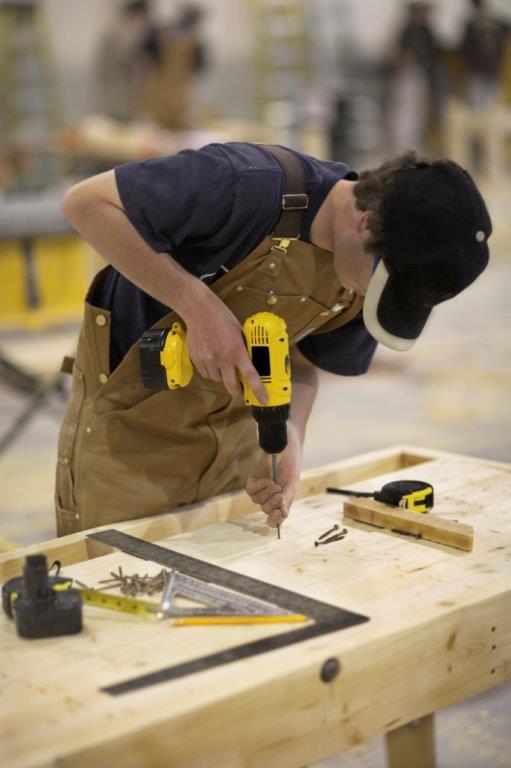Beautifully sited on the fringe of Dartmoor, Lydford boasts three defensive features. Near the centre is a 13th-century tower on a mound, built as a prison. It later became notorious for harsh punishments - 'the most annoyous, contagious and detestable place within this realm'. To the south is an earlier Norman earthwork castle: to the north, Saxon town defences.
Design
Design

Most of what we see in the world which is man-made is there by design, whether that be good or bad is a matter of opinion, but it is a crucial aspect of this subject that both the creative and logistical sides of the topic are discussed in full. Undertaking trips is a great way to generate debate, inspire students creatively and also make them think about implications of things such as location, weather, longevity, colour, shape, materials, texture interaction with the surrounding environment, design history, fashion and fads.
Trips for design are very often either practical workshops or visits to museums, buildings or venues which have exhibits or themselves designed to inspire students to think creatively or logistically. Great examples include a trip to the Victoria and Albert museum in London, to view the Eden Project in Cornwall or the Sage arena in Gateshead from a design perspective.
Often trips will lead to major follow-up projects in the classroom which will include both practical and theoretical session, and other topics such as Physics or Technology can be involved.
Due to the nature of the practical sessions which often take place on design-based trips, the implications for safety are very important and increased attention should be paid to the suitability fo the activities, the tools being used and also ensuring the students are well-briefed, wear any protective equipment or clothing at all times and behave themselves.
Or you could be inspired by visiting design icons such as the Tate Modern, the Saatchi Gallery or even the studios of Aardman Animations.
Main organisations:
Design and Technology Association (DATA)
National Society for Education in Art and Design
British Institute of Interior Design
Inclusion: NASEN
Venues for this Curriculum
The Roman Wall of St Albans, which was built between AD 265 and 270 to defend the Roman city of Verulamium, can still be traced for most of its two-mile circuit.
This charming rustic mill is one of only four virtually complete corn mills in Cheshire. Take a guided tour of Nether Alderley Mill, and learn all about the process of milling and hear fascinating stories about the lives of the millers.
This picturesque and rustic stone chapel is thought to have been the chantry for Shap Abbey originally. It was built around the sixteenth-century and has been used as a cottage and meeting house during its long history.
The key to open the chapel door is hanging by the front door of the house opposite.
Carisbrooke Castle is best known as the place where King Charles I was imprisoned.
The Cathedral Church of SS. Peter and Paul is the Roman Catholic cathedral in the Clifton area of Bristol.
Located in the historic former Cambrian Mills, the National Wool Museum is a special place with a spellbinding story to tell.
Wool was historically the most important and widespread of Wales's industries.
At the very heart of the Cornish Mining World Heritage Site sit these two great beam engines, originally powered by high-pressure steam boilers introduced by local hero Richard Trevithick.
Preserved in their towering engine houses, they are a reminder of Cornwall's days as a world-famous centre of industry, engineering and innovation.
Come and study at Bolton Wanderers!
Activities are varied and include a choice of: digital media and design, robot building, music creation, computer game design and animation, to name just a few! There is an emphasis on team-building and leadership skills development too.
Experience the stately grandeur of this stunning 18th-century mansion set in a beautiful wooded landscape park ideal for family walks.
Castle Coole is one of Ireland's finest Neo-classical houses, allowing visitors to glimpse what life was like in the home of the Earls of Belmore.
Lulworth Castle, built in the early 17th Century as a hunting lodge, became a country house at the heart of a large estate. Thomas Howard, 3rd Lord Bindon, built the Castle in order to entertain hunting parties for the King and Court. The Howards owned it until 1641 when it was purchased by Humphrey Weld, the direct ancestor of the present owners.
A taste of the country on the edge of the city.
Discover fine Derwent Valley views, winding paths and refreshing open spaces while exploring our elegant buildings and ruins.
The Guildhall was the centre of city government from the early 15th century until its replacement by City Hall in 1938. The elaborate design and size of the Guildhall reflect Norwich's status as one of the wealthiest provincial cities in England in medieval times.
Glynn Vivian Learning team continue to deliver an offsite programme of full and half day workshops to take place within schools while the Gallery is closed for redevelopment.
Pages
Featured Provider
Login/Sign Up
Latest News
Schoolboy Falls From 60ft Cliff on School Trip

A 15-year-old boy fell 60ft over the edge of a cliff whilst on a geography school trip, miraculously only suffering minor injuries.


